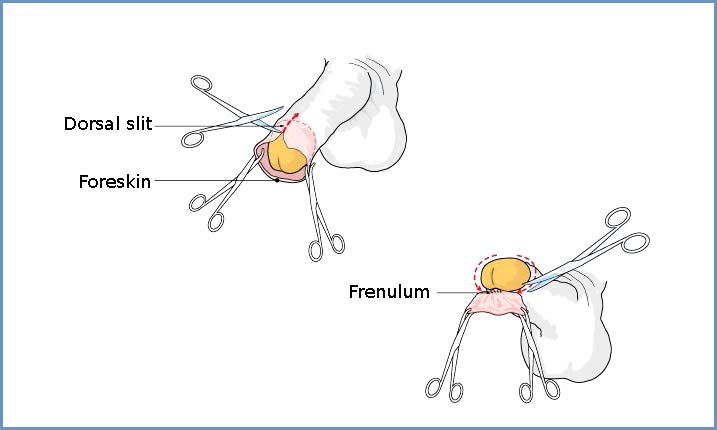When Procedure is Used
Circumcision is often performed as part of religious practices and beliefs, but some people choose to have their baby boys circumcised for practical reasons. When it is performed later in life, it is often because the foreskin doesn’t retract (phimosis) or because of an infection in the penis. Having your baby circumcised is a personal decision, and you should feel comfortable asking about all of the benefits and risks as well as about the procedure itself.
During Surgery
Doctors will usually use a local anesthetic to make the procedure as painless as possible. The local anesthetic is applied as an injection. This procedure can also be done under general anesthesia, with local anesthesia being used for post-op pain. Once the penis is anesthetized, the doctor will often use clamps to isolate the foreskin, which is then cut or snipped away. Following the procedure, there may be a light gauze dressing placed on the penis in addition to an ointment of petroleum jelly or antibiotic that you will change often.
The procedure is very similar with older boys and men, but doctors are more likely to use a general anesthetic with older patients instead of just a local one.
Risks
The risks are low. However, potential risks might include
- pain
- bleeding
- infection
- damage to the glans of the penis
Benefits
- fewer urinary tract infections in infants
- reduced risk of some sexually transmitted diseases later in life
- decreased likelihood of penile cancer
- prevention of the inability to retract the foreskin
 Circumcision
Circumcision







